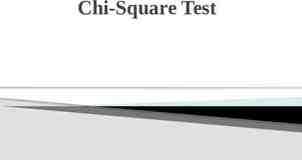Introduction to the Tort System (and to a few torts) Professor
30 Slides511.61 KB
Introduction to the Tort System (and to a few torts) Professor John Nockleby Director, Journalist Law School
Types of Relief Sought in Civil Lawsuits (not just torts) 1. Damages Nominal Compensatory Punitive [must meet a very high standard] 2. Injunction- or “equitable relief” 3. Declaratory—declaration of rights I own the patent, you don’t This is my property, not yours The rule adopted by the corporation is valid
Is Civil Litigation Merely “Dispute Resolution? Civil litigation frequently involves private parties However: The government may file civil suits Many “private” disputes have significant public impact Civil dispute-resolution often involves setting standards of conduct that govern all of us
Tort: One Type of Civil Litigation “Tort” –a general term meaning “wrong” Tort law is common law Our initial focus: the Tort SYSTEM Tort law is basic building block for many statutory protections (e.g., civil rights; consumer statutes; employment)
Specific Examples of Torts: Product liability: All products sold to consumers or businesses Cars, coffee makers, beds, irons, clothing, pharmaceuticals, electrical outlets, machinery, computers, chairs, tools, and devices Communication torts defamation, privacy Torts against person assault, false imprisonment, infliction of emotional distress, negligence Property torts trespass; interference with contracts; unfair competition, fraud
Litigation Imposes Standards of CARE: Safety in businesses, restaurants Travel --auto, train, bus, truck, airplane Tort law enforces professional standards, including medical profession, health care, legal profession ALL behavior of each of us towards everyone else Privacy Libel, slander Trespass Interpersonal contacts like assault, battery Q: If legislature hasn’t acted, who sets the standards of care and conduct? A: Courts, through the tort system .
Litigating Torts Sets Standards of CARE : Does the rest of society benefit if suits are filed?
Functions of Tort System 1. Provides for compensation for a limited class of injured persons. 2. Serves to regulate safety for vast array of behavior 3. Reflects (and sets) moral standards
1. Compensatory function A Plaintiff must meet formal legal requirements: Legally-defined Injury A tort, such as negligence, fraud defamation, or assault Timeliness; procedures followed But
Basic Principle of Compensation in Tort Law is Restorative The plaintiff is entitled to be restored to the position s/he would have been in but for the tort And not a penny more NOT windfall; NOT duplicative If anything, Plaintiffs are undercompensated b/c they must pay own costs of litigation
Pragmatic limitations on Tort system Gotta have a lawyer Contingency fee—inadequate for “low value” or highexpense cases Legal aid –usually restricted to poverty cases (LL/tenant) & not tort Need to locate a “responsible” defendant Need a mechanism of enforcing the claim such as a lawsuit* Government enforcement? Administrative agency? *You have no rights if you can’t enforce them
2. Regulatory Function of Tort Law Tort adjudication establishes standards of behavior in THIS case, but also for the future Tort law is sometimes controversial: Tort shifts losses from X to Y, where X is often individual and “Y” is corporation or govt Litigation is expensive, time-consuming Recognizing power dynamics is critical “Tort Reform” [retrenchment]
Tort Regulatory Role This regulatory function in particular engenders significant hostility from those subject to the regulation Competing Narratives: “Erin Brockovitch” vs. “McDonalds Coffee”
How are these Safety Standards Enforced? LITIGATION
Are Lawsuits Merely “Private?” Disputes? Individualized enforcement obscures the public regulatory function by making it appear that a tort suit is merely a dispute between an individual plaintiff and an individual defendant. The norm-setting function of tort law is hidden in the myriad sets of individual disputes. Journalists play key role in focusing attention on regulatory function of tort law
Tort Law Becomes Controversial In 1960’s-1970’s, many common law barriers to recovery were changed by courts: Medical malpractice Charitable immunities Expansion of responsibility to 3d parties
Tort Law Becomes Controversial Much ongoing controversy over Tort Law: “tort reform” Medical malpractice standards Damage caps Constitutional challenges to punitive damages Congressional Acts enacted long-ago now claimed to pre-empt state law arbitration “agreements” in consumer contracts
Transition to Specific torts
General definition of “Tort” A type of injury to person or property usually not involving enforcement of a contract
Negligence tort: Duty-Breach-Cause-Damage DUTY: Everyone owes others the duty to use reasonable care under the circumstances
Negligence tort: Duty-Breach-Causation-Damage BREACH: A plaintiff must show that a Defendant failed to use reasonable care under the circumstances
Negligence tort: Duty-Breach-Cause-Damage Causation: The claimant must show that the “breach” CAUSED the harm, & the harm wasn’t caused by something else. “but for” test
Negligence tort: Duty-Breach-Cause-Damage The injured person must prove DAMAGES
Good Questions to Ask: Is this a case in which the plaintiff alleges negligence? If Not, what does the P claim the defendant did that was wrong? What did the defendant do that was allegedly negligent? How To are you going to prove [negligence]? Deft’s lawyers: how are you going to show that what Defendant did wasn’t [negligent]?
Good Questions to Ask: Is this case likely to establish new standards of care? Or is the law pretty clear in this area? Is what the Plaintiff is complaining about a common type of problem? Is this case significant? If so, why?
A Common Problem: Institutional Responsibility to Protect Visitors Why is the Shopping Center Liable for the Thief’s behavior? Shopping Center Owner Customers injured in parking lot Thief, attacker
A Common Problem: Multiple Negligent Defendants Victim using pay phone sues multiple defendants Phone booth door stuck— repair company sued Phone booth located 20 feet from dangerous intersection— phone company sued Drinking driver careens off road—hits victim stuck in booth. Driver sued. Car brakes fail— manufacturer sued
Key Principles: Multiple Defendants No one can be held liable unless the victim can establish liability against that particular defendant The victim can recover no more than 100% of her losses (no double recovery allowed) The issue then becomes how we allocate liability among jointly-responsible defendants If one defendants is insolvent, the victim is usually permitted to recover against the remaining defendants (changed by legislation in many states)



































